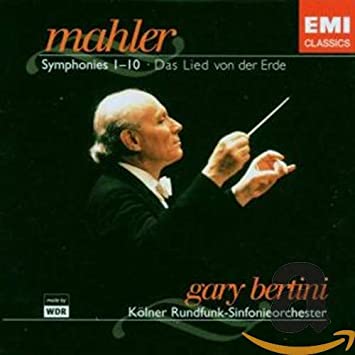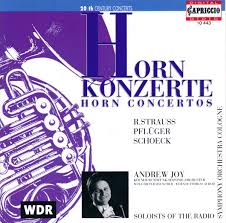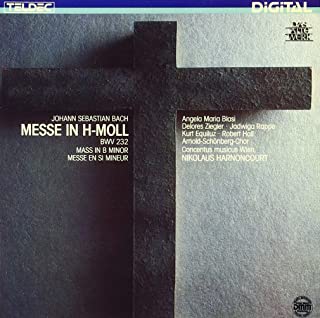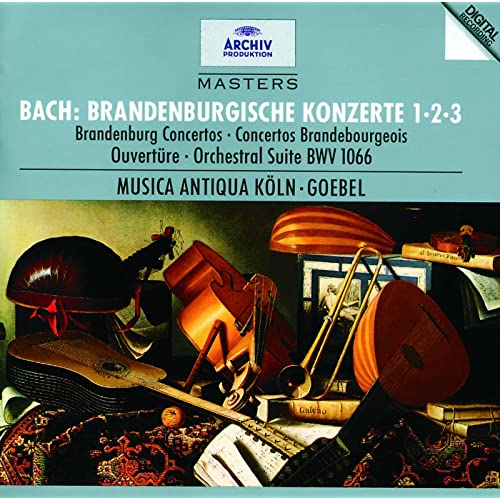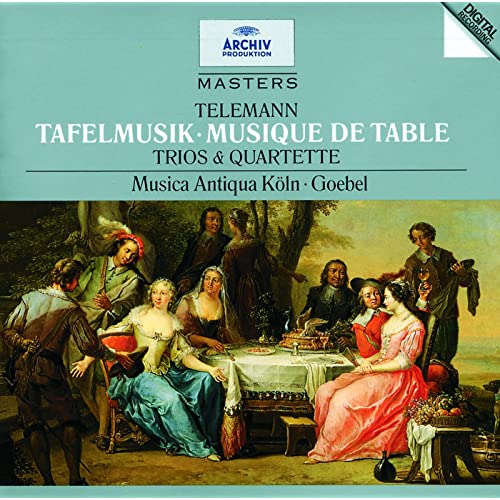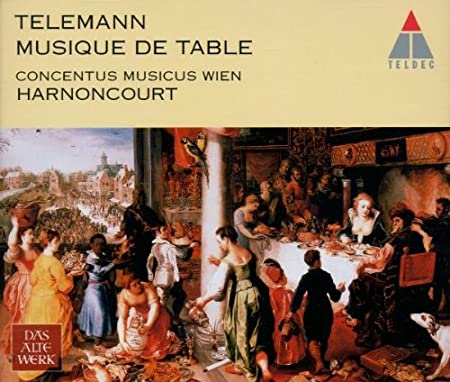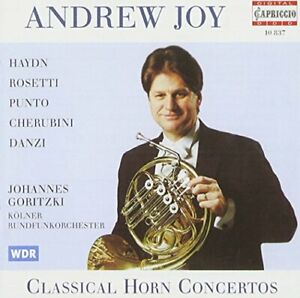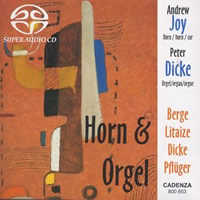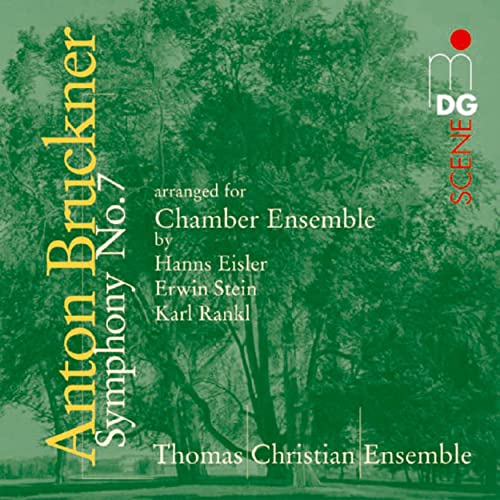Gary Bertini and Mahler, both recording and performing at home and abroad, helped me grow into my position on first horn. The Chicago Mahler recordings under Solti and the breath taking playing of Herseth and Clevenger were a strong influence.
Mahler success with Gary Bertini lead to a solo recording opportunity. After receiving a compliment for my Mahler playing from our producer I asked him about recording Strauss 2 for CD. He tasked me with organizing a conductor, tenor (the Britten Serenade was planned) and a record label. That took three days. Then it took months of patient persistent asking before the OK finally came through. Several individual recording sessions squeezed in between a busy orchestral schedule finally came together in this recording.
Friedemann Immer kindly introduced me to Nikolaus Harnoncourt and Concentus Musicus Wien.
My first gig was the B minor Mass from Bach. I used a baroque horn built for me by Joseph Monke in Cologne.
The recording session lasted only one of the three hours that had been planned.
When it was clear that we were done, Mr Harnoncourt invited me for a talk that lasted two hours. He asked many interesting questions, listened intently to my answers as well as listening keenly to my questions and giving considered answers. It has remained one of my most cherished memories.
This was a great experience together with Charles Putnam. Kept us on our toes.
Another great experience together with Charles Putnam. Touring with the piece was a challenge because of too little practice time to stay in shape.
Concentus Musicus im Konzert mit Harnoncourt im Musikverein am 22.2.1988
… beim Concerto Es Dur (Doppelkonzert von G. F. Telemann) über die stupende Meisterschaft der beiden Musiker mit den Naturhornen … PRESSE Wien, 23.2.1988
… of the Concerto in E flat major (double concerto by G. F. Telemann) and the stupendous mastery of the musicians with the natural horns … PRESS Vienna, 23.2.1988
Someone forgot to put our names (Andrew Joy and Charles Putnam) into the program notes.
Securing this recording opportunity also required pushing hard, hearing six “no’s” before the “yes” came. It also got off to a rocky start. When the producer suggested Johannes Goritzki should do the conducting I was happy to be able to pay Johannes back a little for all of the generous support and coaching he had given me. Here I was also tasked with creating the program notes. It lead to some interesting reading in 19th century music journals. We recorded this CD in six days and I was exhausted when we finished on the Saturday. The first critic that I read after the CD was released tore it to pieces.
This recording was made in St Andreas in Issenheim, France. The interior was still being renovated and workers brought in and installed a wooden plaque of St Andreas holding a piece of music.
Originally we also wanted to record the Leopold Mozart Concerto, but at the end my lips gave out. So Peter had a look at the Davidslied being held by St Andreas and then went and brilliantly played a theme and variations improvisation in a single take on the beautifully restored Joseph Callinet organ from 1834!
If you listen carefully to the end of Horn Lokk you can hear a bird churping outside the church.
This recording was a career highlight for me. The concert hall in Schloss Esterhazy looked pretty much as did in Haydn’s day. Fabulous surroundings including the food and wine in the local restaurants. Playing together with my colleagues was incredibly inspiring and satisfying.
Harry Vogt from the WDR new music department suggested this CD and its contents. Bernfried Pröve was present and very supportive during the recording session of his piece Eclair. This was the most challenging project and collection of pieces with which I ended my recording my career.
